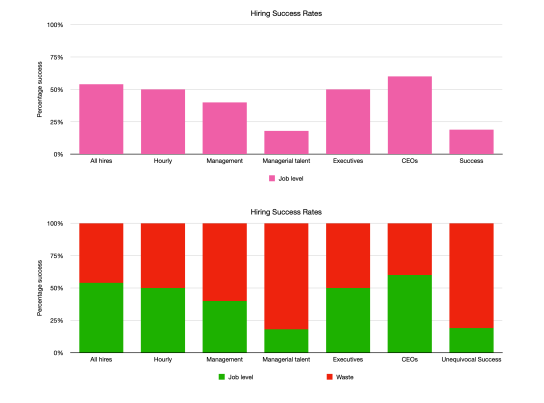Organisational Self-Therapy
[Note: I regard this post as incomplete. I’m publishing it now in the hope that getting some feedback will encourage me to finish it.]
For some years, DIY seemed all the rage. I’m not so sure that’s true in home decorating any more, but it does seem to be increasing in popularity in the therapy domain. Individual self-therapy seems like it’s become more popular and more acceptable, both.
I have for some time been thinking whether self-therapy for organisations might be possible, beneficial even. Maybe self-therapy would be a viable alternative to engaging a therapist?
In my Organisational Psychotherapy assignments to date, most of my engagement time with client organisations has been spent sitting in with them during their Business As Usual (BAU – meetings, conversations, lunches, etc.), observing their social dynamic and modes of interaction. Such observations lead me – as therapist – to find questions that I can share with the organisation, questions which invite reflection and discussion on e.g. unsurfaced assumptions and beliefs. (This being the essential practice of therapy, both organisational and other kinds).
The Challenge
For any organisation, making space and time for group reflection can be problematic. In most organisations, folks struggle to find time for all their scheduled responsibilities, let alone more esoteric activities like reflection and discussion of assumptions and beliefs. On the face of it, where’s the point – where’s the value – in spending any time on such “esoteric” things?
Anyone who’s been following this blog for any length of time may know of my focus on organisational effectiveness. And my explanation for organisational effectiveness in terms of Rightshifting and the Marshall Model. [links]
Observing clients during their BAU is all very well. It doesn’t take up any of their time and, aside from the marginal financial cost of having a therapist present, doesn’t detract from folks’ day jobs or the work of the organisation.
But when it comes round to the therapist finding and putting questions to the organisation, there’s at least a couple of issues we face:
- Finding the time to get together (Organisational Psychotherapy invites group discussions) to listen to the questions and reflect and discuss them as a group.
- The disconnect (in time, attention) between the point of observation and the point of reflection and discussion.
So, I’m presently focused on ways to ameliorate the impact of these issues.
Addressing the Issues of Having a Therapist
Improvements on each of the above issues:
- Integrating the asking of therapist’s questions into BAU (having the folks in the organisation ask themselves questions).
- Reducing or elimination the disconnect in time and attention between the point of observation and the point of reflection and discussion (integrating Organisational Psychotherapy into BAU whilst promoting useful group discussions and reflections).
It’s Good To Talk
As BT were wont to tell us: “It’s good to talk”.
But many organisations believe (or at least, assume) they don’t have time to talk. And certainly not the time for “talking for the sake of talking” (which is what many might regard talking in order to surface collective assumptions and beliefs – and then reflect on and discuss). That’s why Organisational Psychotherapy in practice takes place amongst the daily ebb and flow of regular meetings and conversations happening in the course of the organisation’s business-as-usual. No need to shoehorn off-sites or special meetings for the necessary conversations happen. Although off-sites and dedicated meetings can help, too.
Leveraging Valuable Discussions
So, recently I’ve been thinking about means to stimulate group reflections and discussions, in the course of doing things that clearly have immediate business value. For example, many organisations spend (an inordinate, perhaps) amount of time and management attention on coming up with mission statements, visions statements, and the like.
In decreasing order of “unarguable value”:
Purpose
Most organisations spend at least some time, effort and management attention considering and communicating the “shared purpose” of the organisation. Indeed, the Mission Statement is a favoured format for this effort. This then feeds into PR, marketing, branding, positioning and other such MarComms activities. Aside: Simon Sinek describes this kind of thing in terms of the “Golden Circle”. https://www.youtube.com/watch?v=Jeg3lIK8lro
I’ve been involved in many such initiatives over the years, both with clients and my own companies. I’ve not, however, seen the agendas for such initiatives include time for examination and reflection on the organisations assumptions and beliefs. It’s almost as if the purpose existing in glorious isolation. “Here we are, this is our purpose, handed down from God (or the CEO)”. There’s obviously scope for reflecting on the assumptions and beliefs that underpin the announced Purpose, or Mission Statement.
Effectiveness
Most organisations spend at least some time, effort and management attention on becoming more effective. Most often, this resolves to question like “How to cut costs?”, “How to improve quality?”, “How can we increase our market share?” and so on. Rarely, though, do such discussions “go meta” and delve into the roots of organisational effectiveness. If they did, though, we could imagine questions such as “What makes for an effective organisation?”, “What kinds of effectiveness are we seeking?“ and “Is effectiveness more than just a WIBNI?”
Agility
Generally, little time is spent on the question of “Let’s go Agile” and even less on what “Agile” means. Most often, the decision is a de facto edict from a HiPPO, handed down to the software folks as a fait accompli.
Doctrine
[TBD]
Others
[TBD]
– Bob

 And some data from various sources:
And some data from various sources:
